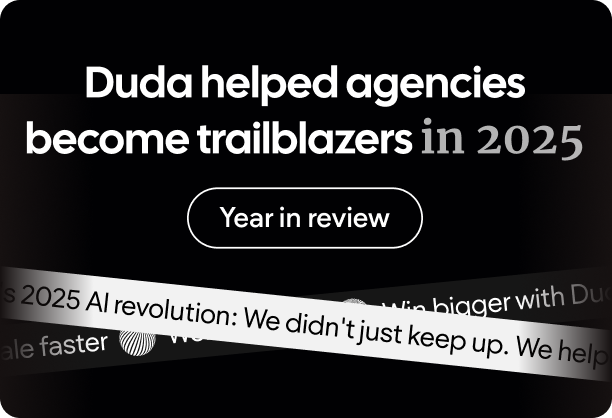Many agencies find themselves in a pretty fragile spot compared to product companies. Losing just one major client can hit their bottom line and long-term growth hard. For some agencies, this fear of client churn is a constant worry—especially since it’s not unusual for clients to look elsewhere. In fact, SetUp’s Marketing Relationship Survey revealed that nearly 40% of brands are likely to switch agencies within the first six months of working together,
as reported by Ad Age.
The reasons for this churn can range from poor communication to mismatched expectations, but the result is always the same: a steep cost.
Did you know that acquiring a new client can cost five times more than retaining an existing one?
Decreasing client satisfaction, as reflected in a drop in Net Promoter Score (NPS) or Customer Satisfaction (CSAT), is often the first sign that a
client relationship is in trouble.
But there are other signs to watch for as well.
This blog post will discuss the warning signs for agencies to look out for when an SMB client is about to churn. Recognizing these signs early can be a game changer in preventing client losses and ensuring steady growth. But first, let’s review some of the basics.
How to calculate churn rate and what is a good agency churn rate?
The churn rate represents the percentage of clients who discontinue their relationship with your agency over a specific period. Here’s how to calculate it and what to aim for regarding healthy churn and retention rates:
Churn Rate = (Number of Clients Lost during a Period/Total Number of Clients at the Start of the Period) ×100
For example, if you start the month with 100 clients and lose 5 by the end of the month, your churn rate for that month would be:
Churn Rate = (5/100) × 100 = 5%
What Is a good agency Churn Rate?
According to
Vendasta 2023 Agency Insights Report, most agencies experience a churn rate between 2% and 8%. However, it’s essential to contextualize these numbers based on your agency’s specific circumstances and client base.
Interestingly, 15% of respondents in the Vendasta survey didn’t know their agency’s churn rate, highlighting the importance of tracking this critical metric, which brings me to the next section.
The importance of churn prediction, especially for marketing agencies
Predicting churn is crucial for everyone, not just agencies. However, for marketing agencies, losing even a few clients can significantly impact the bottom line. The ability to foresee potential losses and identify when a client might jump ship can literally mean the difference between your agency's growth and its survival.
Moreover, understanding churn risk can shape your overall strategy. By identifying which clients are more likely to leave, you can prioritize your efforts toward nurturing those relationships. Being proactive enables you to address their needs and concerns before they become deal-breakers.
Okay, now that you know why how to calculate churn rate and why to consider churn in the first place, let's tackle the bigger question: why are clients heading for the exit? It’s not just bad luck—there are usually reasons behind it. Up next, we’re diving into why clients leave agencies.
Why are clients leaving your agency?
Clients don’t just up and leave your agency for no reason—it’s usually a buildup of little (or big) things that go unchecked. Understanding why clients bail can help you nip potential churn in the bud. Here are some common reasons they might be heading for the exit.
1. Misaligned expectations.
When clients sign on with your agency, they have certain expectations for results, timelines, and communication. If those expectations aren’t clearly set—or worse, if they aren’t met—clients can quickly become disillusioned. It’s not just about delivering great work; it’s about ensuring that what you deliver matches what the client thought they were getting.
2. Lack of clear communication.
Poor communication is one of the most common reasons clients leave. If they feel like they’re being left in the dark or have to constantly chase down updates, frustration builds. Clear, regular, and transparent communication goes a long way in reassuring clients and making them feel valued.
Related:
Client communication: tips, tools, and best practices for agency owners
3. No measurable results or lack of data.
Clients invest in agencies to see results. If your work isn’t producing a measurable impact—whether that’s increased sales, better leads, or improved visibility—they’ll start questioning the value you bring. Clients need proof that their investment is paying off, and if you can’t deliver that, they’ll start looking elsewhere.
4. Outgrowing your agency.
Sometimes, it’s not you—it’s them. As clients grow and scale, their needs change. An agency that once fits perfectly might not be equipped to handle more complex strategies or larger budgets. This can be a tricky situation, but spotting when a client’s needs are racing ahead of what you can provide gives you a chance to either adapt or part ways with a friendly wave.
5. Poor onboarding process.
The first few weeks of a client relationship are crucial. A clunky or confusing onboarding process can set the wrong tone from the start, making clients feel unsure or unsupported. Without a strong onboarding experience, even small hiccups can lead to bigger frustrations down the road.
Related:
Everything you need to remember when onboarding your next client
6. They feel neglected.
Clients want to feel like a priority. If they sense your attention is focused elsewhere—whether it’s on bigger clients or other projects—they may start to feel neglected. Agencies that don’t maintain regular touchpoints or personalized attention can quickly lose a client’s trust.
7. Pricing issues.
Sometimes, clients churn because of financial strain or because they don’t believe the value they’re receiving matches the price they’re paying. If a client feels they’re overpaying for the level of service they’re getting, they’ll either renegotiate or leave.
Understanding why clients leave is just the first step; recognizing the warning signs can be your secret weapon in preventing churn. So, without further ado, let’s dive into the main issue at hand.
Warning signs that a client is about to jump ship
If you’re spotting one of these signs, you’re not just being paranoid—these warning signs might be signaling trouble ahead.







